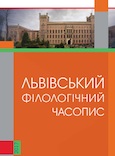ЗСУВ ВІД SOV ДО SVO: НЕЗВОРОТНІЙ ШЛЯХ ДО ПЕРЕВОРОТУ?
Анотація
У статті досліджуються лінгвістичні та екстралінгвістичні фактори, пов’язані зі зсувом синтетичного SOV у бік аналітичного SVO порядку слів в англійській мові. Крім того, у ході дослідження обговорюються можливі причини, через які SOV так довго вживався у середньо- та ранньоновоанглійському періоді. Існує загальна думка, що порядок слів правого розгалуження SVO переважає над порядком SOV. Перехід від SOV до словопорядку SVO, який, в основному, є зміною від дієслово-остаточного порядку слів на порядок слів, в якому дієслово розміщується в медіальному положенні, є одним з найбільш розроблених і яскравих в історії Індоєвропейських мов, англійська мова є однією з них. Порядок слів SOV протягом століть зберігався англійською мовою головним чином через сильний латинський та християнський вплив. Коли Англія була перетворена римлянами, була введена не тільки нова релігія, але й Біблія і, звичайно, латинська мова. У наступні роки по всій країні було побудовано багато церков, монастирів та скрипторіїв, де монахи, священики та книжники навчалися читати та писати латинською мовою, щоб мати змогу проповідувати християнство разом із римськими місіонерами. Так, єдиною мовою Церкви стала латинська, яка була невідома майже 99% населення Англії.



